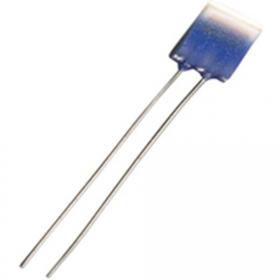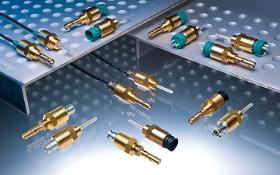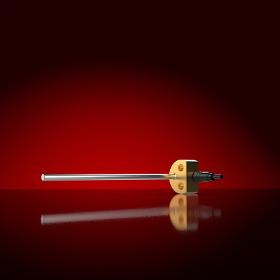- europages
- >
- COMPANIES - SUPPLIERS - SERVICE PROVIDERS
- >
- platinum temperature sensors
Results for
Platinum temperature sensors - Import export

B + B THERMO-TECHNIK GMBH
Germany
The Pt100 temperature sensors are long term-stable, highly accurate and intermateable. The sensors are available in packs of 5.
Request for a quote
B + B THERMO-TECHNIK GMBH
Germany
The Pt500 temperature sensors are long term-stable, highly accurate and intermateable. The sensors are available in packs of 5.
Request for a quote
B + B THERMO-TECHNIK GMBH
Germany
The Pt100 temperature sensors are long term-stable, highly accurate and intermateable. The sensors are available in packs of 5.
Request for a quote
DRIESEN + KERN GMBH
Germany
Selection of probes based on Pt100/Pt1000, thermistors or thermocouples Platinum Temperature Sensor (Pt100/Pt1000) Platinum measuring resistors incorporate a Pt100 or Pt1000 sensor with 1/3 DIN accuracy. They are available in two-wire and also four-wire technique when power resistance needs to be compensated for. Platinum sensors can operate within the range of -50°C...+400°C while still maintaining high accuracy and long-term stability. Thermocouples Thermocouples are suitable for a broad temperature range between -25°C and +1100°C. They feature a fast response time and can be used for applications in hard to reach spaces or for rough, industrial applications. Thermistors Thermistors are sensors based on metal oxide semiconductors which produce a much larger change in signal when temperatur changes occur. Their operating range is -50°C...+150°C. They come in miniaturized design, helping their fast response time. Due to the thermistor's high resistance the effect of power...
Request for a quote
BEDIA MOTORENTECHNIK GMBH & CO. KG
Germany
BEDIA level monitoring sensors are used to monitor the filling levels of liquids. The sensors detect when a filling level is exceeded or falls below a limit. Water-based liquids like coolants, AdBlue®, fresh water, waste water and oil-based liquids like motor oils, hydraulic oils, fuels and brake fluids can be monitored. Operating Principle The function of the sensor is based on the capacitive principle. It detects the change in capacitance that occurs when an electrode surrounded by air is immersed into a liquid medium. This change in capacitance at the electrode of the sensor excites an oscillator. This signal is processed by a microcontroller-based evaluation circuit which activates or deactivates an output stage. Types of Media The level monitoring sensors are designed for two different media types: For electrically conductive liquid media with relative permittivity within a range of εr 35 … 85 (water, coolant, water/glycol mixture) For electrically non-conductive liquid media
Request for a quoteDo you sell or make similar products?
Sign up to europages and have your products listed

BEDIA MOTORENTECHNIK GMBH & CO. KG
Germany
BEDIA level monitoring sensors are used to monitor the filling levels of liquids. The sensors react when a filling level is exceeded or falls below a limit. Aqueous mediums like coolants, AdBlue®, fresh water, waste water, bilge water and oil-based liquids like motor oils, hydraulic oils, fuels and brake fluids can be monitored. Since they contain no mechanical moving parts, their function will not be influenced by dirt particles or other influences. No electrical current is sent through the medium via an electrode with BEDIA sensors, an electrolysis of the medium is not possible. Operating Principle The function of the sensor is based on the capacitive principle. It detects the change in capacitance that arises when an electrode surrounded by air is immersed into a liquid medium. This change in capacitance at the electrode of the sensor excites an oscillator, causing it to oscillate. Then this signal is processed by a microprocessor-based evaluation circuit.
Request for a quote
MICRO-EPSILON
Germany
White light interferometers use infrared light in the non-visible range (approx. 840 nm wavelength), which means that the measurement position cannot be seen. To visualize the measuring position, Micro-Epsilon systems are equipped with a pilot laser which projects a light spot onto the measuring position. In addition, the pilot laser uses a patented method to provide feedback on the distance in addition to the measurement position. If the measuring object is at the correct distance and within the measuring range, a constant glow is emitted by the pilot laser. If the measuring object is outside the measuring range, the pilot laser flashes.
Request for a quote
MICRO-EPSILON
Germany
The capaNCDT DT61x4 is an active, capacitive system for displacement, distance and position measurements. Consisting of a sensor with integrated preamplifier, a robust cable and a compact controller, the measuring system is immediately ready for use without any on-site calibration. The measuring system is available with a cable length up to 15 m and is ideal for automation purposes. The capaNCDT 61x4 is particularly suitable for automated robot manufacturing and measurement tasks with a drag chain. Moreover, it is used in machine building and semiconductor production. For optimum signal quality, the desired cable length is already factory-calibrated.
Request for a quote
NORIS GROUP GMBH
Germany
Predictive maintenance needs measured data to the greatest possible precision. On components with moving or rotating parts, the relevant measuring points (e. g. temperature of an electric motor’s rotor or planetary gearbox bearing) sometimes cannot be accessed with wired sensors. Accordingly, the data needed for condition monitoring can be obtained only with complex calculations and estimates. However, precise and reliable measured data are obtained only when a sensor is placed directly on the moving part. For requirements of this kind we have developed NORIFID, a simple, cost effective measuring system that is based on established technologies, supplies wirelessly power by induction to a sensor on a moving part, and transmits the measured data via RFID to a fixed receiver.
Request for a quote
LENORD, BAUER & CO. GMBH
Germany
Conventional thermometers measure the temperature by means of length or volume change of a material, and are only suitable as display instrument. Temperature sensors from Lenord+Bauer use resistance thermometers that feature an almost temperaturelinear resistance curve, and output the resulting measurement data as electrical signal. They are suitable for a measurement range from 40 °C to +250 °C. A thin stainless steel tube protects the electronics from dirt, humidity and corrosion, allowing the sensors to meet the requirements of protection class IP 68. The sensors are in compliance with fire protection standards EN 45545 and are typetested according to EN 50155. • Platinum resistance thermometer Pt100 / Pt1000 • Measuring tube lengths from 30 mm to 140 mm • Connection with 2, 3 or 4wire technology • Fire behaviour according to DIN 5510 and NF F16101 • Custom configuration
Request for a quoteResults for
Platinum temperature sensors - Import exportNumber of results
11 ProductsCountries
Company type
Category